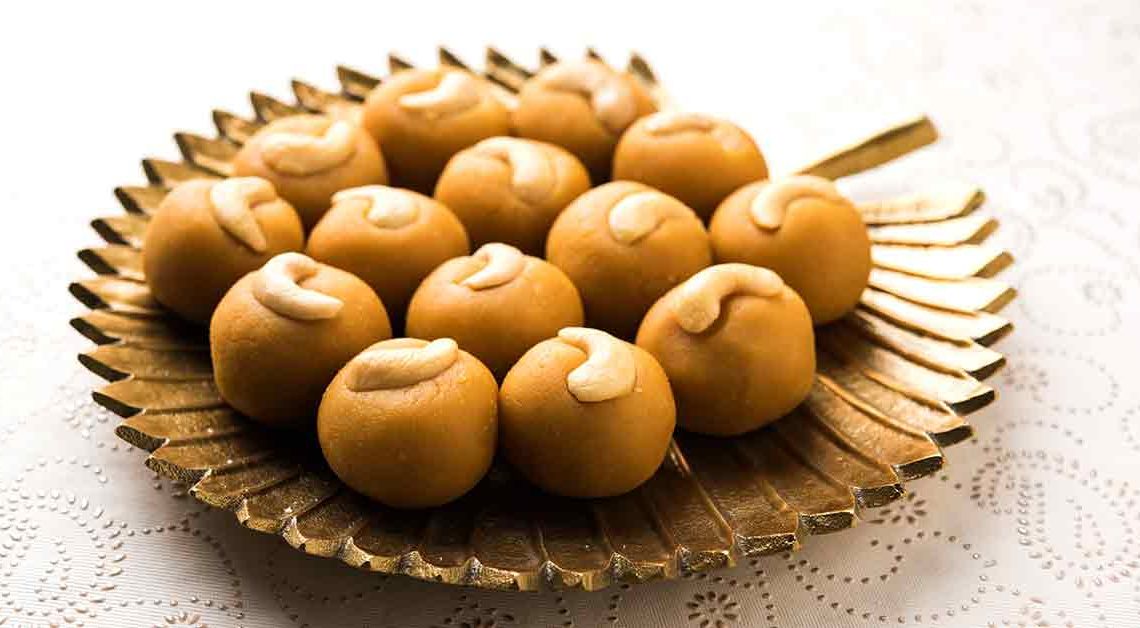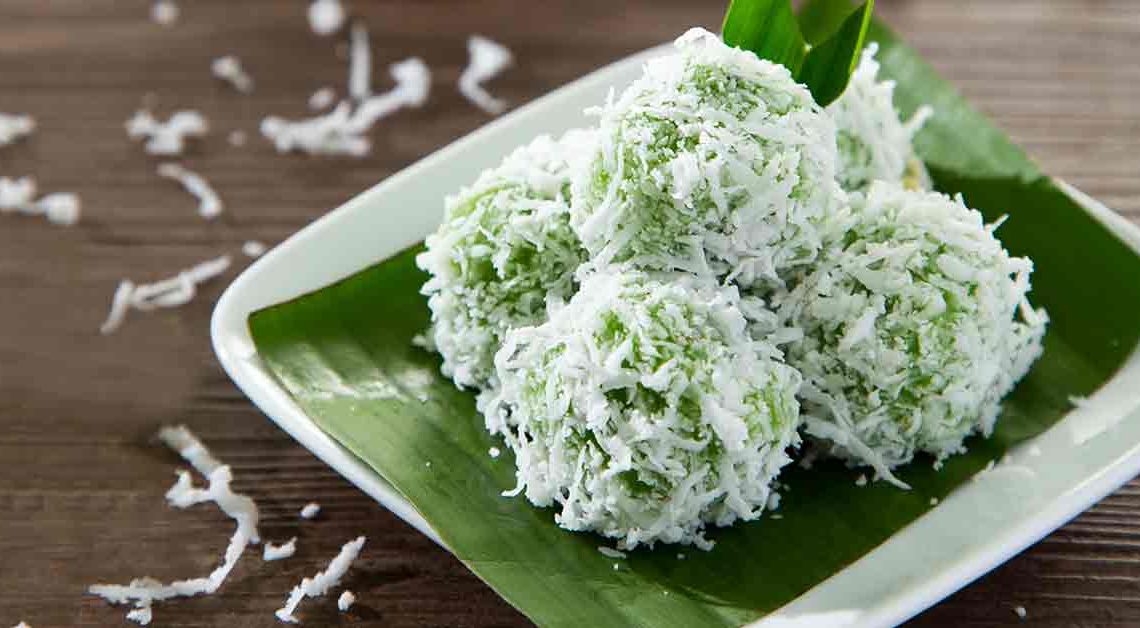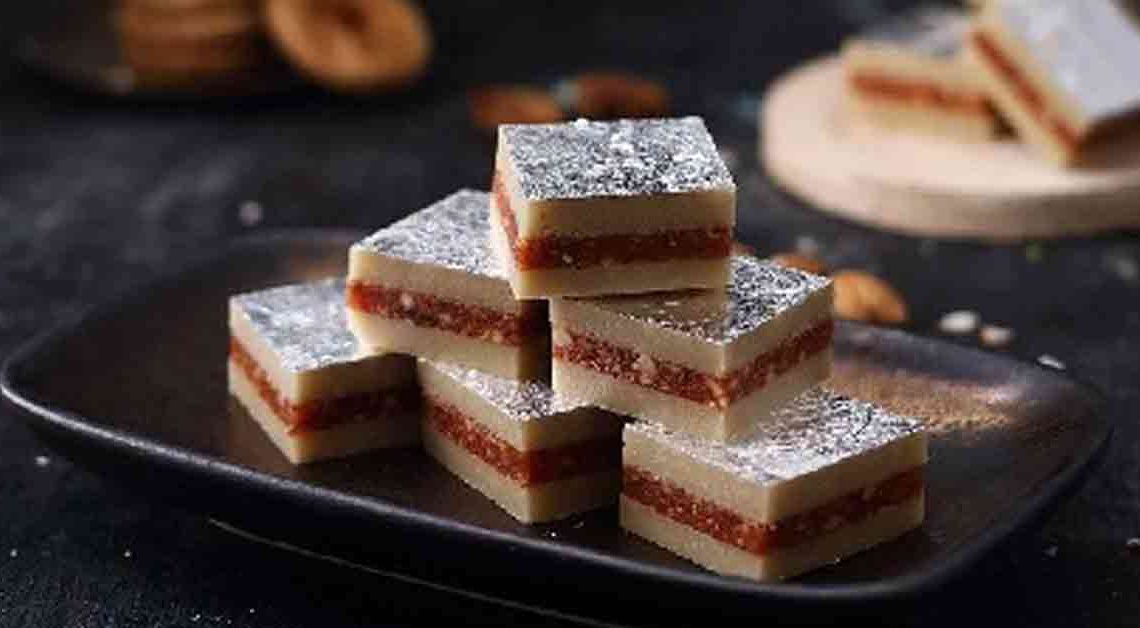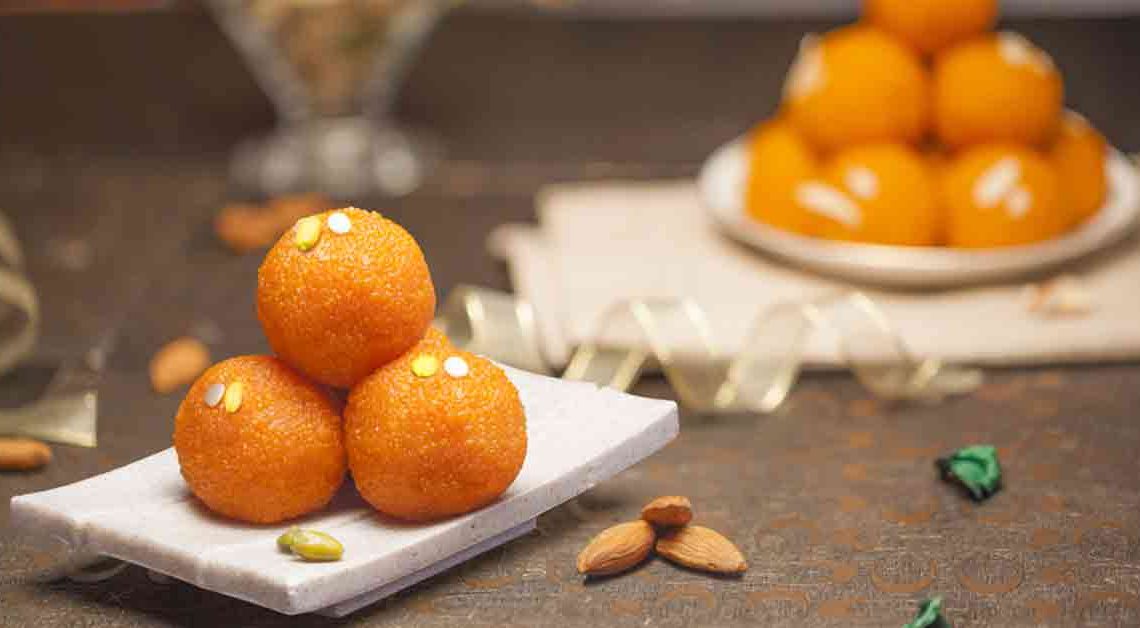Sweet Spheres of Joy: Kaju Ladoo Unraveled

Are you ready to embark on a culinary journey that promises to delight your taste buds and transport you to the vibrant streets of India? Welcome to our food blog Mithainama! where we’re about to dive deep into the world of one of the most beloved Indian sweets – Kaju Ladoo.
Picture this: golden orbs of heaven, glistening with ghee, studded with fragrant cardamom and garnished with slivers of silver vark. It is not just a dessert; it’s a celebration in every bite. In this blog, we’ll uncover the secrets behind creating these delectable, melt-in-your-mouth sweets right in your own kitchen.
But it’s not just about the recipe; it’s about the rich history and cultural significance of Kaju Ladoo. We’ll take you on a fascinating journey through the origins of this treat, from the royal courts of India to its presence in festive celebrations.
Get ready to embark on a delightful adventure into the world of Kaju Ladoo, where tradition meets innovation, and every bite is a celebration of flavors and culture.
Origin of Kaju Ladoo
Kaju Ladoo, also known as Cashew Nut Fudge, is a popular Indian sweet with a rich history that dates back centuries. Its origin is deeply rooted in Indian culinary traditions, and it has become an integral part of Indian festivals, celebrations, and special occasions.
It can be traced back to the royal kitchens of India, where it was initially prepared for royalty and aristocrats. Cashew nuts, known as “kaju” in Hindi, were introduced to India by the Portuguese during the colonial era. The rich and creamy texture of cashews, along with their delightful flavor, quickly made them a sought-after ingredient in Indian sweets.
Over time, skilled Indian chefs and confectioners experimented with cashews, combining them with indigenous ingredients and flavors to create various delectable dishes. It emerged as a result of these culinary experiments, and it gained popularity not only among the royals but also among the general population.
History of Kaju Ladoo
Kaju Ladoo, a delectable Indian sweet, boasts a fascinating history that intertwines with the evolution of Indian cuisine. Its origins can be traced back to ancient India, where culinary artistry flourished in royal kitchens.
The term “Kaju” refers to cashew nuts, which were introduced to India by Portuguese explorers in the 16th century. The creamy texture and rich flavor of cashews soon captured the imagination of Indian chefs. As they experimented with these newly introduced nuts, it began to take shape.
Over time, it became an integral part of Indian festivals, celebrations, and religious rituals. Its significance deepened, especially during Diwali, the festival of lights, where it symbolizes the sweetness of life and new beginnings.
Kaju Ladoo’s allure transcended India’s borders, becoming a beloved treat in Indian communities worldwide. Its preparation evolved, incorporating modern techniques while preserving its traditional essence.
Cultural Significance
Kaju Ladoo, a beloved Indian sweet made from cashew nuts, carries significant cultural importance in India. Its role extends beyond being a mere dessert; it is deeply intertwined with various cultural, religious, and social aspects of Indian life. Here are some key facets of its cultural significance:
Festivals and Celebrations: It plays a central role in Indian festivals and celebrations. It is often offered as a symbol of sweetness and auspiciousness during special occasions like Diwali, Raksha Bandhan, weddings, and religious ceremonies. The act of sharing is considered a gesture of love, respect, and goodwill like pista ladoo, barfi and many more.
Religious Offerings: In Hinduism, it is frequently used as a prasad (offering) in temples and during religious rituals. It is considered a sacred offering to deities and is distributed among devotees after prayers and worship. This tradition highlights the connection between food, devotion, and spirituality in Indian culture.
Wedding Rituals: It is a customary sweet exchanged during Indian weddings. It symbolizes the sweetness and prosperity of the newlyweds’ life together. It is often shared among guests, relatives, and friends as a token of blessings and best wishes.
Where is Kaju Ladoo Famous?
It is famous primarily in India and among Indian communities around the world. It is a popular and well-loved sweet in various regions of India, and its fame extends to countries with a significant Indian diaspora. Here are some places where Kaju Ladoo is particularly famous:
This delectable ladoo is enjoyed throughout India, and its popularity spans across the country. It is a common sweet served during festivals, weddings, and special occasions in states like Maharashtra, Gujarat, Rajasthan, Punjab, Uttar Pradesh, and many others.
Kaju Ladoo is also popular in neighboring countries such as Nepal, Bangladesh, and Sri Lanka, where it is enjoyed as a festive treat and a symbol of hospitality.
Interesting Facts and Trivia
It is not only a delicious Indian sweet but also a fascinating culinary creation with a rich history and cultural significance. Here are some interesting facts and trivia related to Kaju Ladoo:
- The Portuguese introduced cashew nuts to India during their colonial rule in the 16th century. These nuts became a key ingredient in the making of Kaju Ladoo.
- The word “Kaju” in Kaju Ladoo means cashew nuts in Hindi. The star ingredient of this sweet, cashew nuts, contributes to its creamy texture and rich flavor.
- Making traditional ladoo involves a labor-intensive process. Cashew nuts are ground into a fine paste, mixed with sugar, and shaped into round balls. It requires skill to achieve the perfect texture.
- It is often adorned with a delicate layer of silver vark (edible silver foil), adding an exquisite touch to its appearance and presentation.
- While Kaju Ladoo is undeniably a sweet treat, cashew nuts are a good source of healthy fats, vitamins, and minerals. In moderation, they can offer some nutritional benefits.
Did You Know?
Kaju Ladoo, besides being a delectable Indian sweet, offers some surprising health benefits when consumed in moderation:
- It is primarily made from cashew nuts, which are a good source of monounsaturated fats and antioxidants. These healthy fats may help reduce the risk of heart disease by lowering bad cholesterol levels.
- Cashews are rich in essential nutrients like vitamins (vitamin K, B vitamins), minerals (magnesium, phosphorus, zinc), and dietary fiber, which contribute to overall well-being.
- Cashews contain tryptophan, an amino acid that aids in the production of serotonin, a neurotransmitter that can boost mood and alleviate stress. Enjoying one or two can lift your spirits!
- Cashews are a source of antioxidants like selenium, which may contribute to healthy skin and hair. They also contain copper, a mineral essential for melanin production and skin pigmentation.
- Cashews are a plant-based source of protein, making a tasty treat for vegetarians and vegans to meet their protein needs.







